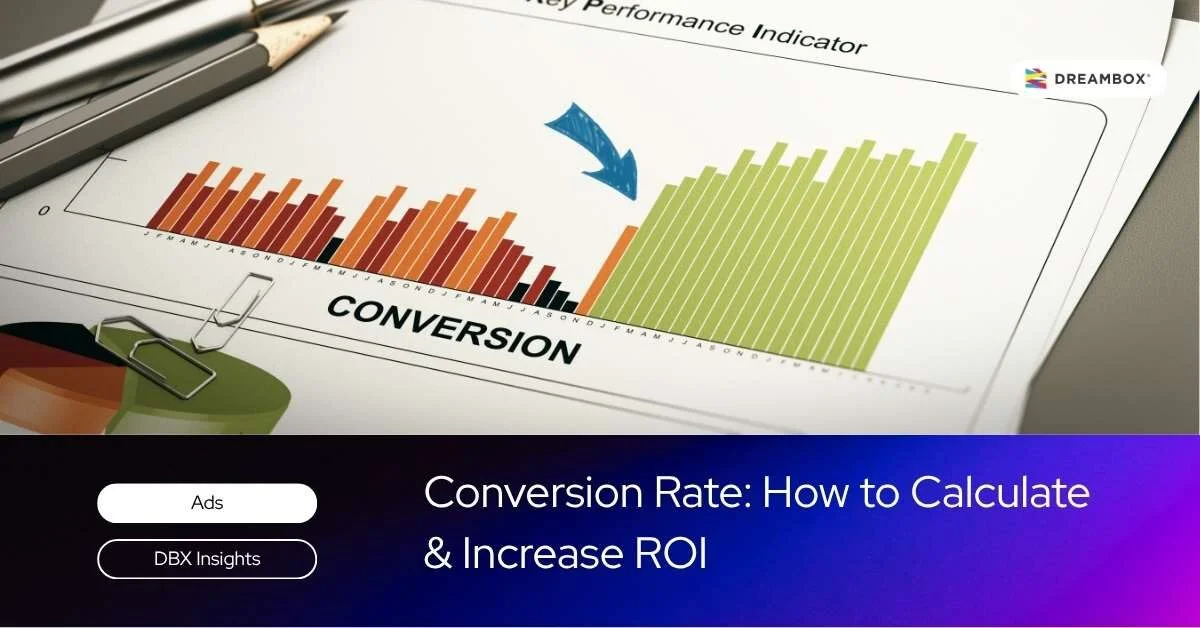The conversion rate metric not only shows how many visitors are interested, but also how effective you are at turning that interest into tangible business actions.
This article will comprehensively cover everything you need to know about conversion rate. From the basic definition and how to calculate it in Google Analytics 4, to practical strategies for improving it for a better ROI.
What is Conversion Rate?
Simply put, conversion rate is the percentage of visitors who perform a desired action, such as making a purchase, filling out a form, or signing up for a newsletter. This metric helps you assess how effective your traffic and user experience (UX) are at driving business results.
Conversion Rate Formula and Calculation Examples
- General Formula
Conversion Rate = (Number of Conversions / Total Visits) x 100%
- Calculation Examples
- E-commerce: 500 transactions from 25,000 sessions → 2%.
- Lead generation: 120 valid forms from 6,000 sessions → 2%.
Calculating Conversion Rate in GA4 Step-by-Step
Marking Important Events as Conversions
- Go to Admin > Events, then enable the “Mark as conversion” toggle for important events (e.g., purchase, generate_lead).
- You can also create new events (if needed) and mark them as conversions.
Where to Check Conversion Rate Reports
- View conversion metrics in Reports > Engagement > Conversions to see the performance of events marked as conversions.
- Use Explore > Funnel exploration to map the user journey and identify drop-off points in the conversion funnel.
Choosing How to Calculate (Per Session vs. Per User) and Segmenting Data
Session conversion rate vs. User conversion rate
- Session conversion rate: the percentage of sessions that result in at least one conversion.
- User conversion rate: the percentage of users who perform at least one conversion.
How to segment data
Segment your data by source/medium, campaign (e.g., Google Ads), device, and location using standard GA4 dimensions like source, medium, campaign, deviceCategory, and country.
Schedule a free 30-minute branding consultation session with our experts.
What is a Good Conversion Rate?
A “good” rate is relative it is heavily influenced by industry, product price, traffic quality, user experience (UX), and acquisition channels. For retail e-commerce, many references cite a range of 1–3% as a common global figure, although actual performance can be lower or higher depending on the business context.
For paid advertising like Google Ads Search, averages and performance variations differ by industry. The best approach is to use an internal benchmark: compare the median data from the last 3–6 months per channel and device to set more relevant targets for your own business conditions.
You might want to learn about Google Ads costs before launching your own brand/product campaign.
How to Increase Conversion Rate
Identifying User Friction
- Map out your sales funnel to find pages or steps with high drop-off rates.
- Review the relevance of your ad messaging, search intent alignment, clarity of your value proposition, and trust signals on your page.
Implementing Quick Wins
- Improve the copy of your headlines and Call-to-Action (CTA) buttons to be clearer and more benefit-oriented.
- Simplify forms by minimizing fields, improve site navigation, and ensure the design is mobile-friendly.
- Add social proof (reviews, ratings) and maintain fast page speeds for a better experience.
Experimenting (A/B Testing), Prioritizing, and Analyzing Results
- Conduct A/B tests to compare two variants of a page element or flow, then choose the version that has the most significant impact on conversions.
- Prioritize experiments based on potential impact versus effort, then statistically measure the results before a full roll-out.
Differences: CR vs CTR vs CVR vs CRO
CR (Conversion Rate)
Conversion Rate (CR) is the percentage of visitors who complete a desired action. It is calculated with the formula: (Number of Conversions / Total Visits or Visitors) x 100%.
CTR (Click-Through Rate)
Click-Through Rate (CTR) measures the percentage of clicks compared to impressions on an ad or link. The formula is: (Clicks / Impressions) x 100%.
CVR (Conversion Rate – Paid Ads Context)
In the context of paid advertising, Conversion Rate (often called CVR) is typically calculated by dividing conversions by clicks. The formula is: (Conversions / Clicks) x 100%.
CRO (Conversion Rate Optimization)
Conversion Rate Optimization (CRO) is the systematic process of increasing the percentage of visitors who convert through research, hypothesis, testing, and iteration.
Common Mistakes and How to Diagnose Them
Tracking Mistakes
- Problem: Events are not marked as conversions, parameters are inconsistent, or duplicate events cause biased data.
- Solution: Audit the Events and Conversions menus in GA4, standardize naming conventions, and test using debug mode.
Analysis Mistakes
- Problem: Drawing conclusions from aggregate data without segmenting by channel, device, or location, even though performance varies greatly by traffic source.
- Solution: Analyze data per channel/source/medium, device, and campaign to find the root cause of issues.
Strategy Mistakes
- Problem: The promise in the ad does not align with the landing page content, the value proposition is unclear, or the cognitive load is too high, causing users to hesitate.
- Solution: Align messaging across all platforms, simplify the conversion path, and strengthen social proof.
Quick Diagnosis Solution
Check tracking (Events/Conversions) → map the funnel → segment data by channel/device → implement quick wins → proceed with targeted A/B testing.
Ready to Increase Your Conversion Rate? Optimize Google Ads & CRO with Dreambox
Want more measurable and impactful conversions? The Dreambox team is ready to help with strategy, Google Ads execution, and data-driven CRO.
Start with Dreambox Google Ads Services and Digital Marketing Services. Contact the Dreambox team for a consultation via their official website’s contact page, and explore the latest insights at DBX Insight.










